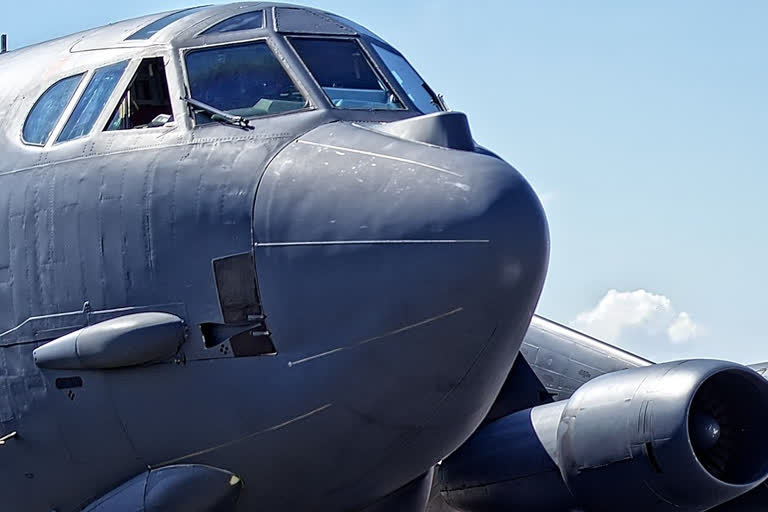New Delhi:Aiming to ‘support allies’ and at ‘strategic deterrence’ amid an escalating tense relationship with China, the US has flown in its B-1 strategic bombers to the Indian Ocean island military base of Diego Garcia.
Seen as a strong messaging to China and an interesting tactical ‘positioning’, the B-1B ‘Lancers’ and about 200 airmen from the 28th Bomb Wing at Ellsworth Air Force Base, South Dakota, landed in Diego Garcia on Sunday (October 17).
An US air force release quoted Lt. Col. Ross Hobbs, 37th Bomb Squadron director of operations: “Global B-1 operations not only provide strategic deterrence to our nation’s adversaries, but also strong, palpable assurance to our allies.”
The B-1 bomber carries the largest conventional payload of guided and unguided weapons in the US air force.
Interestingly, the US had deployed its B-2 ‘strategic’ stealth bombers to Diego Garcia in August 2020 when India-China relations were in a nosedive particularly after the Galwan border clash of June 15, 2020.
The B-52 bomber had also operated from Diego Garcia in January 2020 when the US faced increased hostility from Iran.
The US air force mainly operates three bombers—the B-1B ‘Lancer’, the B-2 ‘Spirit’, and the B-52 ‘Stratofortress’.
The B-1 has been around for 47 years, the B-52 is the oldest US bomber in service since 1955 while the B-2 is all of 32 years. A new stealth strategic bomber B-21 is believed to be undergoing production.
For the Indo-Pacific, the US mainly operates two island bases—the Andersen Air Force Base in Guam and the Naval Support Facility in Diego Garcia.
As opposed to the practice of continuous overseas bomber deployment, a 16-year-old US policy changed in 2020, introducing the practice of Bomber Task Forces deployment which means bombers are deployed to the Indo-Pacific at different times.
The transition was to a “dynamic force employment” model to operate in a “broader array of overseas locations” while keeping the aircraft permanently based in the US.
Said Lt. Col. Ross Hobbs of the B-1 deployment: “Bomber Task Force missions, in support of INDOPACOM’s operational and strategic objectives, are extremely valuable to our aircrew because of the multi-country integration opportunities… They also give us the opportunity to showcase the unmatched range, speed and lethality of the B-1.”
Politically, economically and militarily, US-China ties are under tremendous strain with Taiwan being seen as one of the potential flashpoints.
Relations between India and the US have been warming intensely in recent years much to the chagrin of China. Besides the signing of four foundational military agreements, there has been a slew of joint military exercises.
Even at the moment, a two-week-long exercise ‘Yudh-Abhyas’ (‘war practise’) is taking place between the two land armies at Alaska’s Joint Base Elmendorf Richardson, Anchorage, where many of the joint military lessons pertain to simulating the extreme cold conditions of eastern Ladakh where the Indian and Chinese forces are engaged in a more than 17-month-long grueling faceoff.
